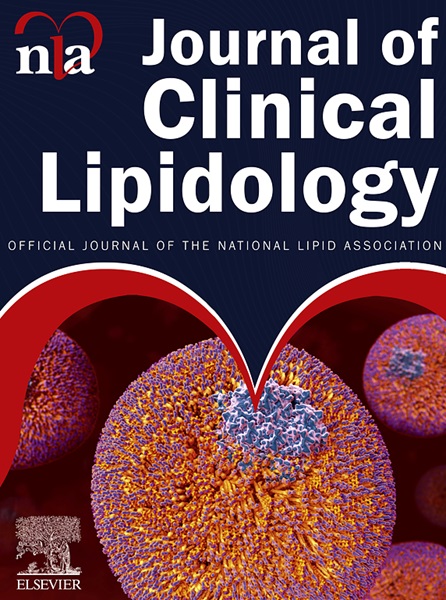Dyslipidemia management in women of reproductive potential: An Expert Clinical Consensus from the National Lipid Association
IF 3.6
3区 医学
Q2 PHARMACOLOGY & PHARMACY
引用次数: 0
Abstract
Cardiovascular disease (CVD) is the leading cause of death among women and its incidence has been increasing recently, particularly among younger women. Across major professional society guidelines, dyslipidemia management remains a central tenet for atherosclerotic CVD prevention for both women and men. Despite this, women, particularly young women, who are candidates for statin therapy are less likely to be treated and less likely to achieve their recommended therapeutic objectives for low-density lipoprotein cholesterol (LDL-C) levels. Elevated LDL-C and triglycerides are the two most common dyslipidemias that should be addressed during pregnancy due to the increased risk for adverse pregnancy outcomes, such as preeclampsia, gestational diabetes mellitus, and pre-term delivery, as well as pancreatitis in the presence of severe hypertriglyceridemia. In this National Lipid Association Expert Clinical Consensus, we review the roles of nutrition, physical activity, and pharmacotherapy as strategies to address elevated levels of LDL-C and/or triglycerides among women of reproductive age. We include a special focus on points to consider during the shared decision-making discussion regarding pharmacotherapy for dyslipidemia during preconception planning, pregnancy, and lactation.
有生育能力女性的血脂异常管理:全国血脂协会专家临床共识。
心血管疾病(CVD)是导致女性死亡的主要原因,其发病率近来不断上升,尤其是在年轻女性中。在各大专业协会的指南中,血脂异常管理仍然是女性和男性预防动脉粥样硬化性心血管疾病的核心原则。尽管如此,作为他汀类药物治疗对象的女性,尤其是年轻女性,接受治疗的可能性较低,也较难达到推荐的低密度脂蛋白胆固醇(LDL-C)水平治疗目标。低密度脂蛋白胆固醇(LDL-C)和甘油三酯升高是孕期最常见的两种血脂异常,由于不良妊娠结局(如先兆子痫、妊娠糖尿病和早产)以及严重高甘油三酯血症导致的胰腺炎的风险增加,这两种血脂异常都应在孕期加以治疗。在这份全国血脂协会专家临床共识中,我们回顾了营养、体育锻炼和药物治疗作为解决育龄妇女低密度脂蛋白胆固醇和/或甘油三酯水平升高问题的策略所发挥的作用。我们特别强调了在孕前计划、妊娠和哺乳期血脂异常药物治疗的共同决策讨论中应考虑的要点。
本文章由计算机程序翻译,如有差异,请以英文原文为准。
求助全文
约1分钟内获得全文
求助全文
来源期刊
CiteScore
7.00
自引率
6.80%
发文量
209
审稿时长
49 days
期刊介绍:
Because the scope of clinical lipidology is broad, the topics addressed by the Journal are equally diverse. Typical articles explore lipidology as it is practiced in the treatment setting, recent developments in pharmacological research, reports of treatment and trials, case studies, the impact of lifestyle modification, and similar academic material of interest to the practitioner.
Sections of Journal of clinical lipidology will address pioneering studies and the clinicians who conduct them, case studies, ethical standards and conduct, professional guidance such as ATP and NCEP, editorial commentary, letters from readers, National Lipid Association (NLA) news and upcoming event information, as well as abstracts from the NLA annual scientific sessions and the scientific forums held by its chapters, when appropriate.

 求助内容:
求助内容: 应助结果提醒方式:
应助结果提醒方式:


